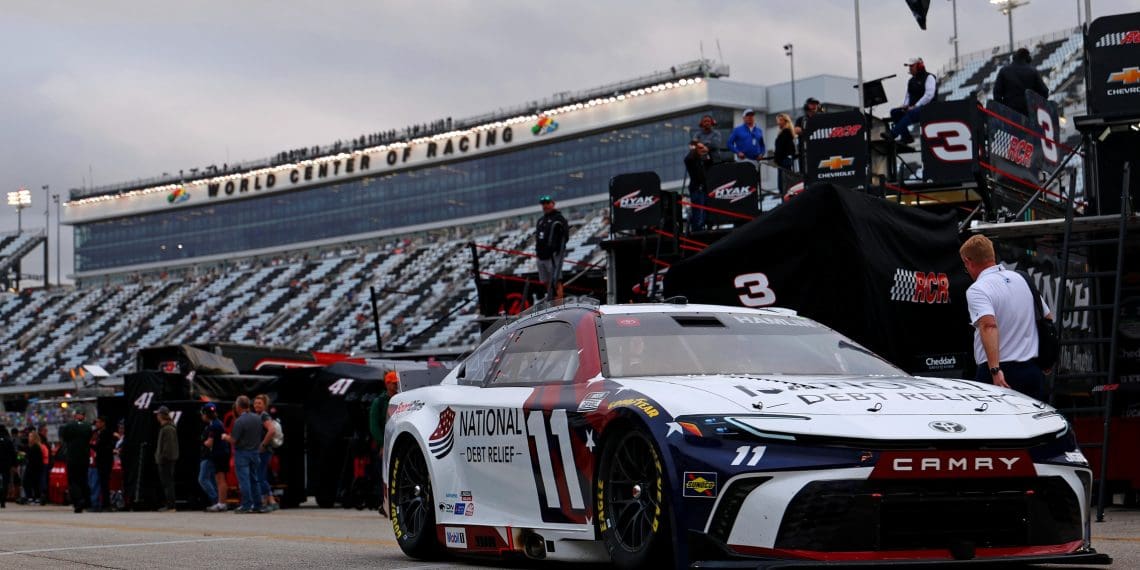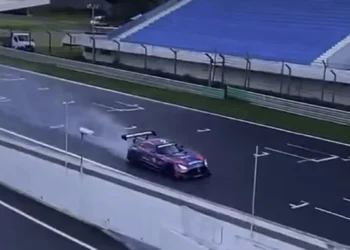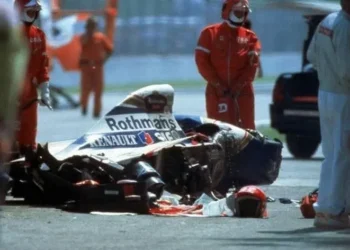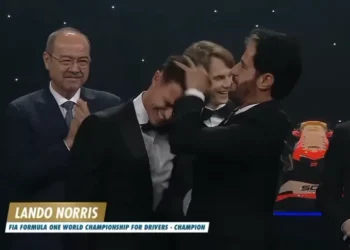In the fast-paced, adrenaline-pumping world of NASCAR, the recent Ambetter Health 400 race has left an indelible mark on fans and racers alike. With no less than 11 caution periods, including eight due to crashes, the race has left an echo of the Daytona 500’s infamous wreckfest involving 35 cars. However, the one common thread between the two races is the contentious issue of last-lap caution calls, which have been the center of a heated debate within the NASCAR community.
Denny Hamlin, a prominent driver for Joe Gibbs Racing, has been under scrutiny for his stance on this issue. Hamlin, who found himself in the middle of a dramatic crash at Daytona when rival driver Cole Custer attempted to pass him, leading to William Byron clinching the victory amid a massive pile-up, has been vocal in his support for NASCAR’s caution procedures. Despite the controversy, Hamlin has remained defiant, particularly in reference to the recent Atlanta race.
From its inception, NASCAR has prioritized safety above all else. It was this ethos that led to the implementation of the caution flag, even on final laps, a decision that can drastically change the race’s outcome. The tragic crash that claimed Dale Earnhardt Jr.’s life during the 2001 Daytona 500 served as a grim reminder of the importance of safety measures.
However, these last-lap caution calls have been in the spotlight since NASCAR’s supposed theft of a photo finish between Austin Cindric and Erik Jones during the Duel qualifier. The approach taken during the Daytona 500 was also questioned, as officials allowed Byron and others to race to the finish line before waving the caution.
The Xfinity Series Atlanta race saw a massive crash where vehicles were allowed to speed through the accident site, a decision NASCAR President Steve Phelps admitted was a mistake. In response, NASCAR ensured that the same error was not repeated in Atlanta. Following an incident where Josh Berry spun out, the race concluded with a green-white-checkered flag and Christopher Bell emerged victorious.
Hamlin has openly appreciated NASCAR’s actions, stating, “Let’s at least applaud them on making the right call for safety because safety should always be number one and entertainment should be number two.” He further emphasized the potential danger of allowing races to continue green amid wreckage, insisting that a driver’s safety should never be compromised for the sake of gaining spots.
However, despite Hamlin’s outspoken support, many fans have voiced their disagreement. Critics argue that as safety standards have risen, the excitement and thrill of racing have diminished. Citing the high number of wrecks during the Daytona 500 and gridlocked cars due to the current superspeedway package, they believe the races have become boring and call for green flag finishes regardless of the on-track conditions.
Some fans also question the legitimacy of the winner in races that conclude with green-white-checkered flag finishes due to the vast sums of money at stake. They contend that NASCAR should make rational decisions; if a crash occurs within the racing line, raise the yellow flag. If it’s at the back of the field or outside of the line, allow the race to continue.
The ongoing debate surrounding NASCAR’s last-lap caution calls reflects the passion and commitment of both drivers and fans. As we look ahead to future races, it remains to be seen how officials will navigate this contentious issue. Yet, one thing is certain – safety must never be compromised in the pursuit of excitement.








